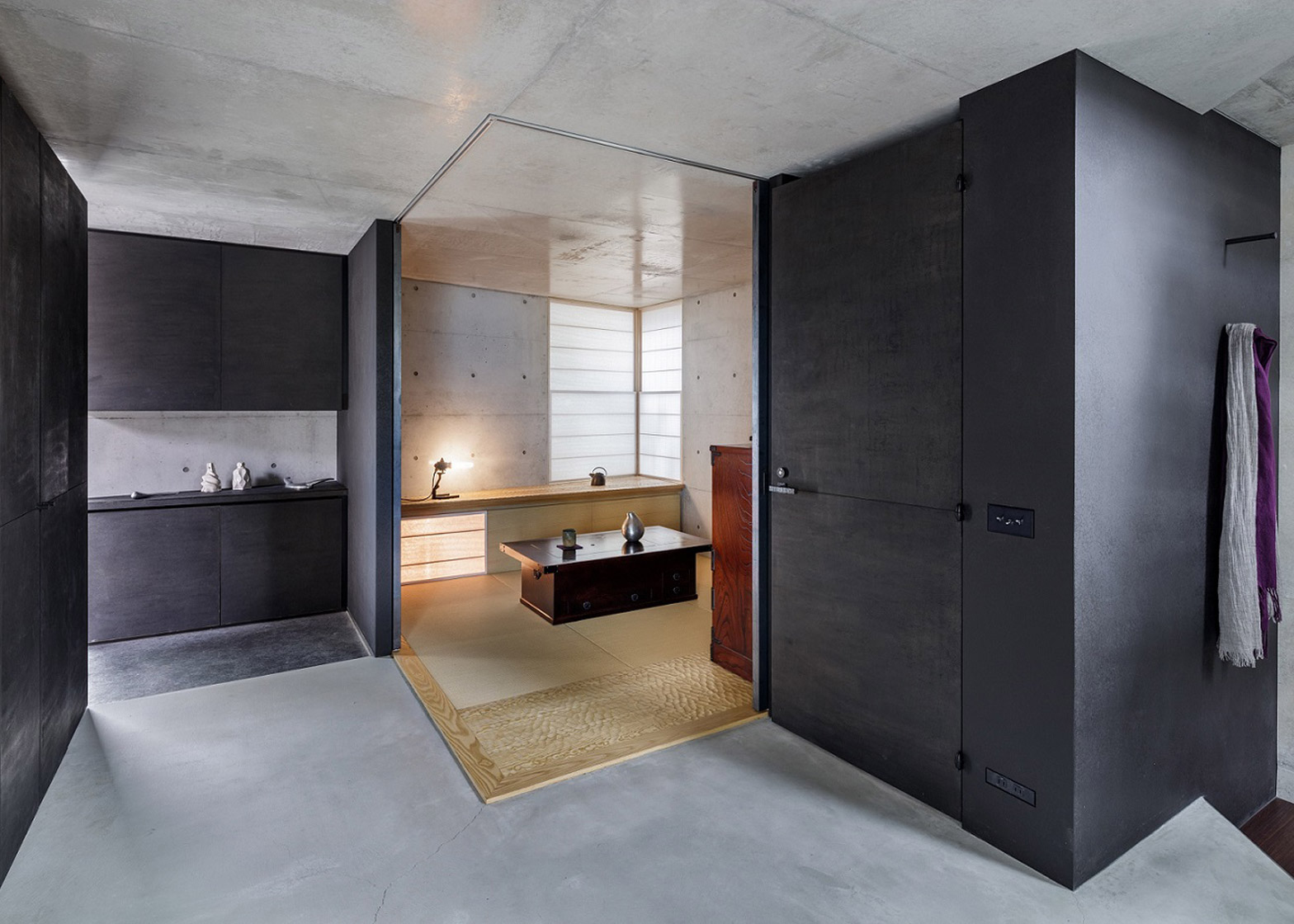Volcanic ash is mixed into the concrete shell of this angular house in central Tokyo, which was designed by Atelier Tekuto for a pair of chemists (+ slideshow).
The Japanese firm developed a type of "environmentally friendly" concrete for R Torso C, which uses particles of volcanic ash known as shirasu in place of traditional sand aggregate.
The ash increases the strength and durability of the concrete, as well as helping to provide humidity control, said the architects. Aray Architecture also used shirasu bricks to help thermally insulate a house in south-west Japan.
The raw concrete structure is left exposed across exterior and interior, where it is paired with a mixture of dark and light timber fittings.
"We want to see exposed concrete finish inside and out," the clients told Atelier Tekuto, "a challenging piece of architecture that is at the same time environmentally friendly."
The corners of the house were "pruned" away to create windows with views of the sky and street from the narrow urban plot. This feature also crops up in the firm's Monoclinic House, which has pointy skylights and exposed concrete walls.
"The way of building architecture respectfully towards nature and the environment in high density residential districts in Tokyo is to build towards the sky," said the architects. "It is the only direction with a true feeling of the vastness of nature."
"To form a strong connection with the sky, the corners of the rectangular building were pruned away at an angle," they added. "This action, cutting away the internal volume, paradoxically creates a sense of spaciousness in the continuous four-storey-space inside."
The windows are aligned to allow natural light into each of the building's four storeys. The ground floor is slightly elevated to allow a portion of glazing to extend down to the sound-insulated basement, which is used as a music room and for watching films.
A flight of concrete steps leads up the front of the house to the entrance level, where there is a traditional Japanese room and a bathroom.
A small open-plan living room and kitchen sit on the first floor, while the bedroom is located on the third. Storage areas are built into furniture in the living area to help combat the lack of space.
"The living room is a very small space, but a 5-metre-high ceiling and a large oblique triangular window drawing in an abundance of external light results in a cognition that is far greater than the reality," said the architects.
Photography is by Jérémie Souteyrat.














